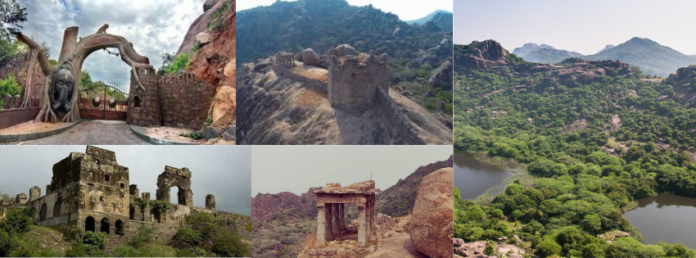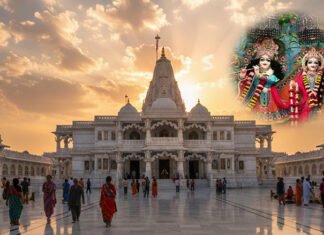Kondaveedu Fort is an ancient hill fort located near Guntur in the Indian state of Andhra Pradesh. It stands atop a cluster of hills and is a symbol of the region’s rich history, showcasing its strategic military importance and architectural brilliance. Below is a detailed account of Kondaveedu Fort, covering its history, structure, and current relevance.
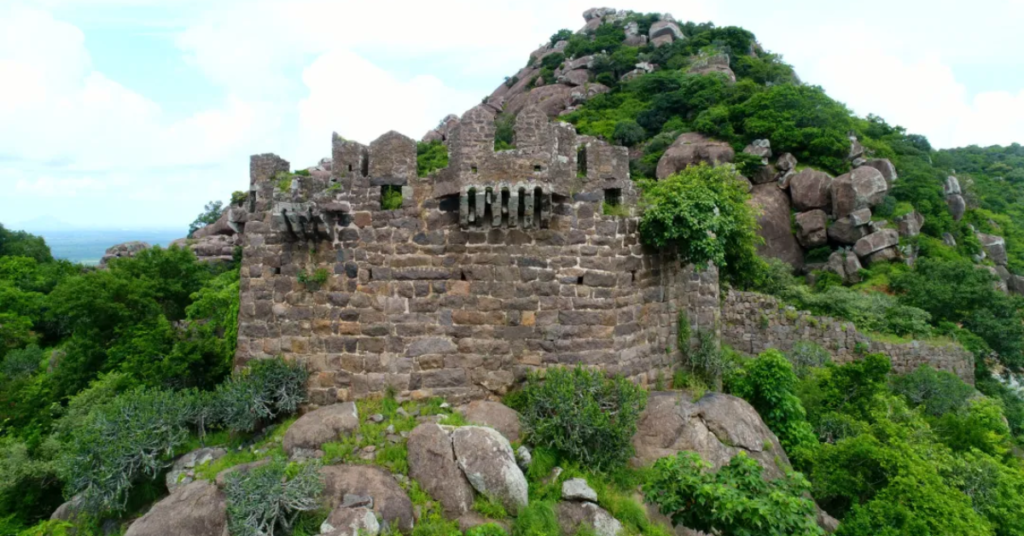
History of Kondaveedu Fort
The Kondaveedu Fort was built in the 13th century by the Reddy Dynasty and was later expanded by the Vijayanagara Empire and the Qutb Shahi rulers. Its strategic location made it a significant military base and a center of power during medieval times. The fort was the capital of the Reddy Kingdom, under the reign of Prolaya Vema Reddy. Who constructed many parts of the fort, including temples and palaces.
It witnessed several historical events, including battles between the Reddy kings and the Vijayanagara rulers. In the 16th century, the fort came under the control of the Bahmani Sultanate and later passed on to the Qutb Shahi and Mughal empires.
Also read: Exploring the Rich Avian Diversity of Uppalapadu Bird Sanctuary
The architecture of Kondaveedu Fort
Kondaveedu Fort is built at an elevation of 1,700 feet on a steep hill, offering a panoramic view of the surrounding landscape. The fort comprises three forts within its walls. The fort has 21 structures, including palaces, temples, warehouses, and residential complexes. There are also numerous caves, water tanks, and granaries inside the fort. One of the most significant architectural features is the fort’s triple entrance, designed to confuse invaders and delay their approach.
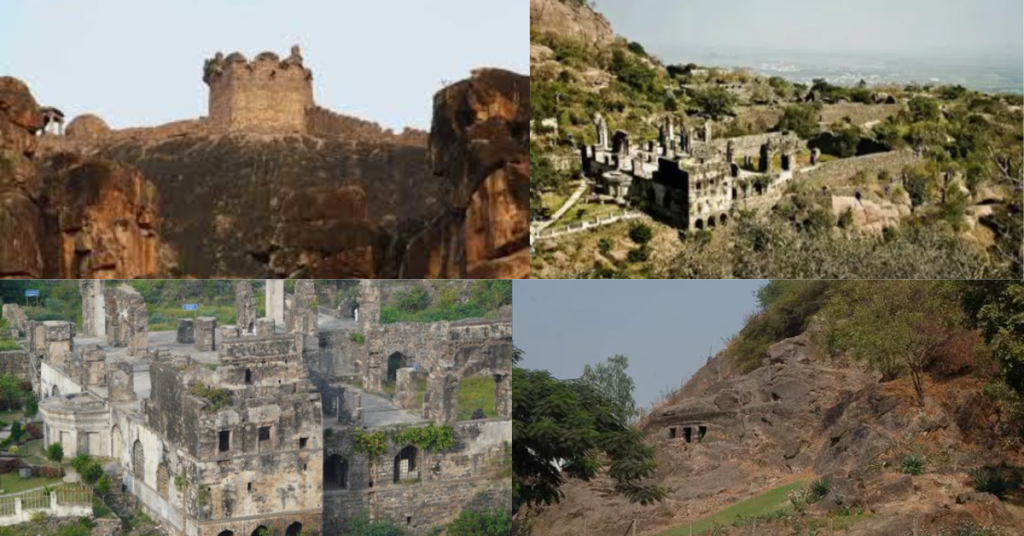
The architecture of the fort reflects a mix of Reddy, Vijayanagara, and Mughal styles. One of the key highlights is the entrance gate with intricate carvings. There are also several ruined palaces and a treasure house, along with temples dedicated to Lord Lakshmi Narasimha and Gopinatha, which show the religious significance of the site.
Kondaveedu Fort is spread across three hills, with the main fort standing on the highest peak. The fort is made of large granite stones and features massive stone walls, gates, and several watch towers. It is known for its defensive architecture, including high walls, moats, and gates designed to protect against enemy invasions.
Significance of Kondaveedu Fort
- Military Importance: Kondaveedu Fort’s hilltop location and robust fortifications made it a crucial military outpost for controlling the eastern Deccan region. Its strategic position allowed the rulers to monitor and control trade routes. Especially those connecting the coastal regions to the interior of the subcontinent.
- Historical and Cultural Value: The fort represents the legacy of the Reddy dynasty, which was known for its patronage of Hindu religion and culture. Several temples and inscriptions found at the site reflect the dynasty’s religious and cultural interests. The architecture displays influences from both Hindu and Islamic styles due to the successive rulers.
- Battlefield of Empires: Kondaveedu Fort was the site of many historical battles. Especially during the conflicts between the Reddy rulers, the Vijayanagara Empire, and the Bahmani Sultanate. Its capture by Krishnadevaraya in 1515 CE marked a significant moment in the expansion of the Vijayanagara Empire in the eastern Deccan.
- Tourism and Archaeological Interest: Today, the Fort is a prominent tourist destination. Attracting visitors with its historical ruins, scenic views, and trekking opportunities. The Andhra Pradesh government has undertaken several restoration projects to preserve the fort’s structures and promote tourism in the area.
Also Read: The Exclusive of Bhimavaram Sri Mavullamma Ammavari Temple
Key Attractions at Kondaveedu Fort
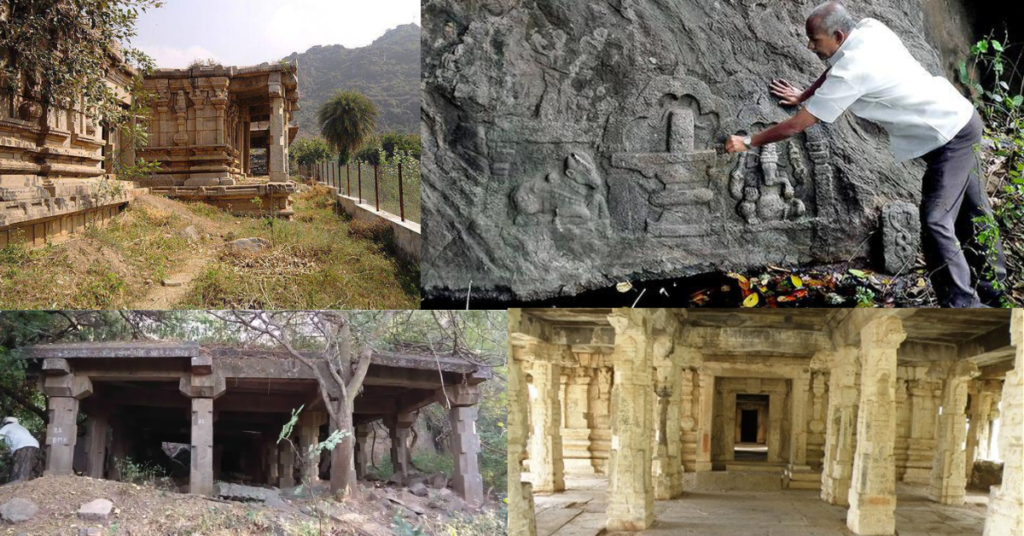
- Ruins of Ancient Temples: The fort contains several dilapidated temples that were once thriving centers of worship. The Lakshmi Narasimha Swamy Temple at the fort is still a place of worship and attracts pilgrims. There is also a Gopinatha Swamy Temple that holds cultural significance. The most significant among them is the Gajalakshmi Temple, which showcases the architectural brilliance of the Reddy period.
- Trekking and Scenic Views: Kondaveedu Fort is a popular trekking destination due to its challenging terrain and stunning panoramic views. The trek to the fort takes visitors through lush forests, ancient stone pathways, and winding roads, offering a rewarding experience for history enthusiasts and nature lovers alike.
- Gandhi Stupa: At the base of the hill is the Gandhi Stupa, a modern structure erected to commemorate the memory of Mahatma Gandhi. This monument adds a contemporary layer to the historical landscape of Kondaveedu.
Restoration and Conservation Efforts
In recent years, efforts have been made to restore The Fort to its former glory. The Andhra Pradesh Tourism Department and Archaeological Survey of India (ASI) have been working to protect the fort’s crumbling structures, and clear pathways, and promote the fort as a heritage tourism destination. Trekking routes have been developed, and plans for a ropeway project are also underway to enhance tourist accessibility.
Nearby Attractions
Kondaveedu Fort is close to several other important tourist attractions, including:
- Amaravati is known for its historic Buddhist legacy.
- Undavalli Caves, are known for their rock-cut architecture.
- Mangalagiri Temple is a popular pilgrimage site dedicated to Lord Narasimha.
How to Reach Kondaveedu Fort
The fort is located about 25 kilometers from Guntur and is easily accessible by road. The nearest major railway station is Guntur Railway Station, and the closest airport is Vijayawada International Airport, which is about 90 kilometers away. Visitors can hire private taxis or take buses from Guntur to reach the base of the hills.
Best Time to Visit
The best time to visit Kondaveedu Fort is during the winter months, from November to February when the weather is pleasant and ideal for trekking. It is advisable to carry water and food as there are limited facilities available near the fort.
Conclusion
Kondaveedu Fort is a magnificent historical site that tells the story of Andhra Pradesh’s medieval past. With its strategic location, impressive architecture, and rich cultural legacy. The fort continues to captivate the imagination of historians, archaeologists, and tourists alike. Its enduring significance lies not only in its military history but also in its role as a symbol of the Reddy dynasty’s contributions to art, culture, and politics in South India.
Frequently Asked Questions
A: Kondaveedu Fort is located near Phirangipuram in the Guntur district of Andhra Pradesh, India.
A: Kondaveedu Fort was built by Prolaya Vema Reddy of the Reddy Dynasty in the 13th century.
A: Kondaveedu Fort was a prominent military and administrative center during the Reddy Kingdom and later ruled by various empires.
A: Yes, Kondaveedu Fort offers a moderately challenging trek with scenic hilltop views, making it a popular spot for trekkers.
A: Kondaveedu Fort is mostly in ruins, but restoration efforts are underway to preserve its historical significance.

